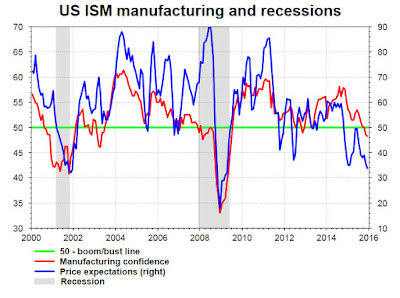The
trouble is that global policymakers seem to be running out of fresh ideas to
deal with this new leg of contagion. The major central banks have already deployed
most of their monetary armoury in dealing with successive waves of the crisis
since 2008.
Global
central banks are close to running on empty. Interest rates have been slashed
to rock bottom levels and a ton of quantitative easing money has already been
thrown into the monetary reflation pile.
There
is one very obvious clue to what happens next. Interest rates either need to go
a lot lower or else the QE generators need to get cranked up again. The
implication for markets is that the major economies will be saddled with ultra
low rates for years.
It
is causing mayhem for monetary policymaking and forcing rushed decisions. The
European Central Bank is already setting the stage for another likely deposit
rate cut in March, which will push euro zone rates even deeper into negative
territory.
The
Bank of England is also having second thoughts about monetary policy tightening
and looks set to postpone a well-flagged plan to hike UK interest rates until at
least 2017. The Bank believes the UK economic outlook is too fragile to sustain
higher rates at this stage.
Deepening
financial market turmoil will also stop the US Federal Reserve dead in its
tracks on rate tightening. Despite the strength of the domestic economy and
extremely positive employment trends in recent years, the US central bank is
fretting again about the weakness of the global economy.
Worries
about China and the fragility of emerging economies, especially Brazil and
Russia, could put future US rate hikes on ice for a long while. And if
conditions start to deteriorate much further, threatening to derail growth
altogether, the Fed could be pushed into a dramatic policy U-turn. Last
December’s rate rise would need to be reversed and the Fed might even need to
consider kick-starting QE again to extend its bond-buying programme.
If
the global slowdown starts to get out of hand and deeper deflation persists
then interest rates around the world will continue to converge towards zero and
remain that way for a long while. The Fed slashed rates near to zero at the end
of 2008 and held them there for seven years. The same fate could befall other
economies over coming years.
The
experience of Japan in the last three decades is bound to resonate. From the mid-1990s
onwards, Japan has struggled with episodes of recession, weak recovery and chronic
deflation. Even after repeated rounds of government and Bank of Japan policy interventions
the economy is still struggling. The legacy has been interest rates stuck at
ultra-low levels for 20 years.
A
global crash is not inevitable. Markets seem to be turning a drama into a
crisis, but it is no hard landing yet. Growth in China may be at its weakest
for 25 years, but it is still robust at 6.9 per cent. Underlying economic
growth running around 2 per cent in the US and UK looks reasonable too. Even
the euro zone’s underlying 1.5 per cent growth rate is far from being a
disaster. Growth simply needs to be re-energised.
Global
policymakers can call a halt to the slide, but they need to make a united
stand, to think and act together. The ECB’s hint last week that it might add
more monetary stimulus in March is a positive step, but more needs to be done
by other central banks too.
The
leading nations need a much more coherent and co-ordinated strategy to deal
with damaging global headwinds. By working together through supranational
bodies like the Group of Seven, G20 and International Monetary Fund, the
leading nations can make a difference.
Better
co-ordination of monetary and fiscal reflation on a broad front could turn the
tide. And the major nations should avoid competitive currency devaluations
which are little more than short term ‘beggar-thy-neighbour’ palliatives.




